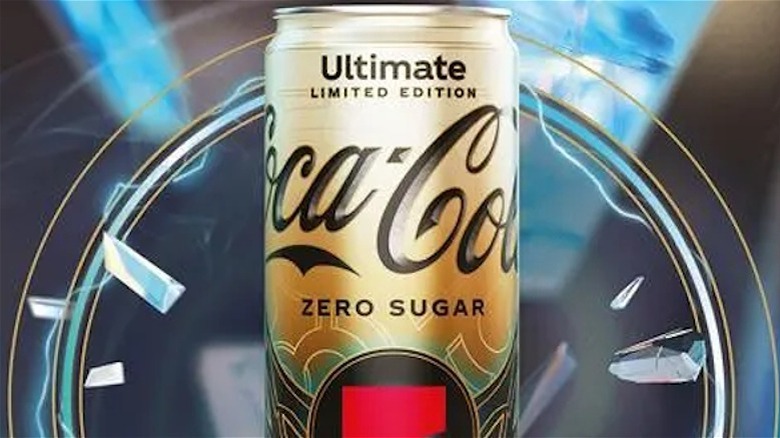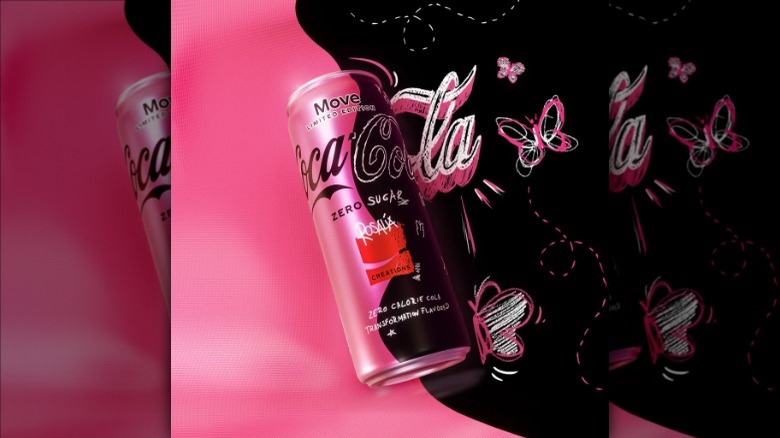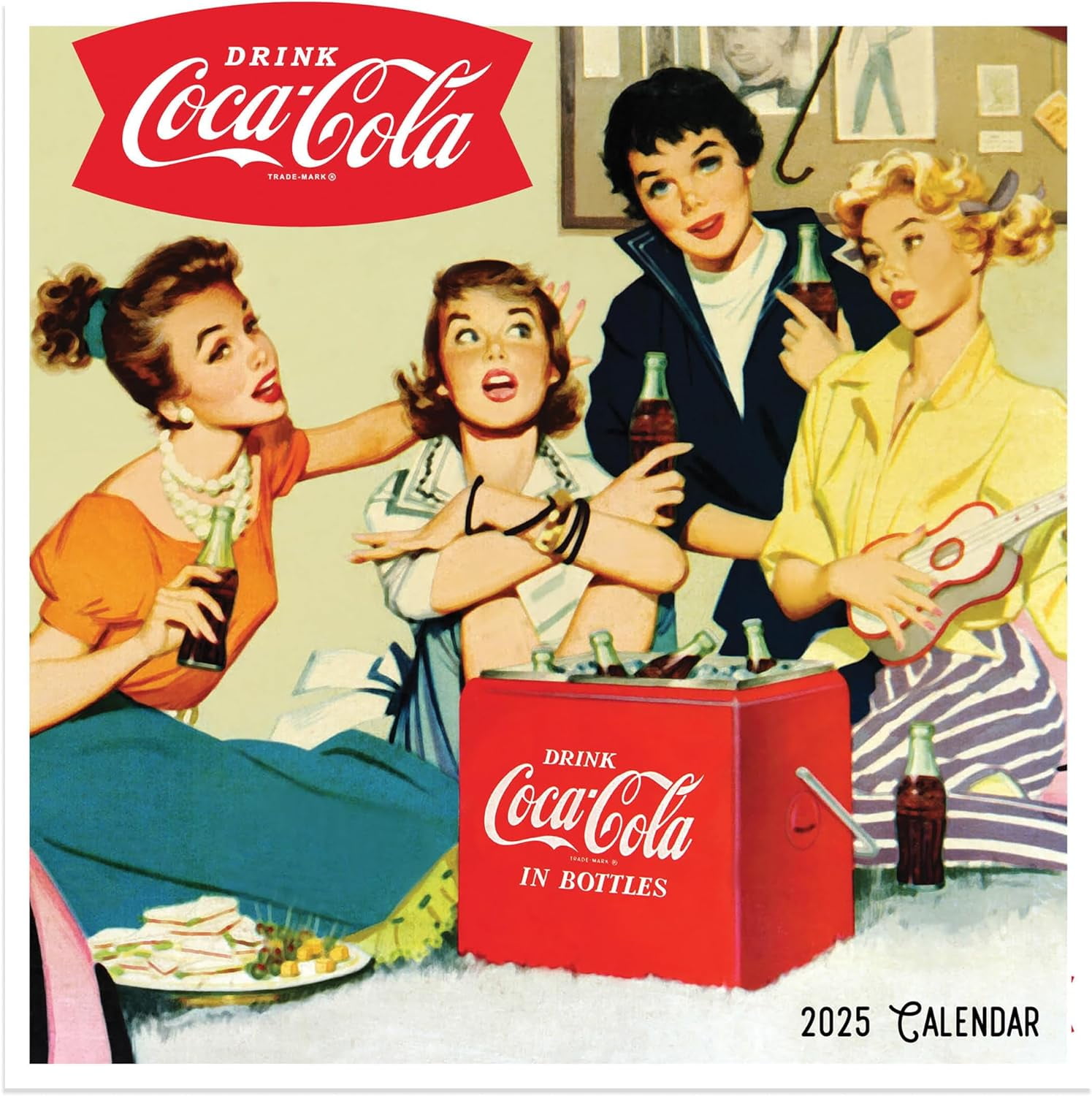Is Coca-Cola’s 2025 Flavor Shift a Game-Changer? We Investigate

Coca-Cola’s 2025 Flavor Shift: A Game-Changer? We Investigate.
The soft drink landscape is a dynamic battlefield, constantly shifting with consumer trends and a relentless pursuit of novelty. For decades, Coca-Cola has reigned supreme, a ubiquitous presence in refrigerators and vending machines worldwide. But as the calendar flips to 2025, whispers of a significant flavor shift are becoming a roar. With the phasing out of Coca-Cola Spiced and the much-anticipated introduction of a new, yet-to-be-revealed flavor, the question on everyone’s lips is: Is this a mere flicker of experimentation, or a seismic change that will redefine the iconic brand?
The Winds of Change: Why Now?
The beverage industry is in perpetual motion. Consumers, particularly younger demographics, are increasingly adventurous, seeking out unique taste profiles and experiences. This has led to a surge in artisanal sodas, complex flavor combinations, and a growing demand for healthier alternatives. Coca-Cola, a company renowned for its ability to read and respond to the market, appears to be leveraging these very trends.
The recent announcement of the discontinuation of Coca-Cola Spiced, a flavor that enjoyed a relatively short lifespan, signals a willingness to pivot quickly. “As part of this strategy, we’re planning to phase out Coca-Cola Spiced to introduce an exciting new flavor in 2025,” a Coca-Cola spokesperson confirmed. This isn’t the first time Coca-Cola has experimented with its core formula. From the infamous New Coke debacle to the more recent successful introductions of flavors like Cherry, Vanilla, and the limited-edition Y3000 Zero Sugar (co-created with AI), the company has a history of testing the waters.
However, the 2025 shift feels different. It’s not just about adding a new variant; it’s about a potential re-evaluation of what the “Coca-Cola taste” can and should be in the modern era.
Beyond the Red Disc: Deconstructing the Potential Flavor Profile
While Coca-Cola remains tight-lipped about the specifics of its 2025 offering, several clues and industry observations offer a glimpse into the future.
-
The Return of Cane Sugar: One of the most intriguing developments is the potential return of cane sugar to select Coca-Cola products. The news that Coca-Cola is launching a new soda made with cane sugar, an ingredient not widely used in its core products since the early 1980s, is significant. This move could tap into a nostalgia for older formulations and cater to a segment of consumers who prefer the taste profile of cane sugar over high-fructose corn syrup. It also aligns with the broader trend towards more “natural” ingredients.
-
The Zero-Sugar Dominance: Coca-Cola’s Zero Sugar lineup is no longer a niche offering; it’s a powerhouse, fueling a broader shift to health-conscious drinks and making up a substantial 30% of its global volume. It’s highly probable that the new 2025 flavor will either be introduced as a Zero Sugar variant or will have a strong Zero Sugar component. The success of the AI-co-created Y3000 Zero Sugar further solidifies this strategy, demonstrating the brand’s openness to leveraging technology to understand and cater to future taste preferences.
-
Tapping into the Zeitgeist: The new flavor is expected to “tap into the zeitgeist, reflecting popular culture’s influence on food and drink.” This suggests a flavor that is not just a simple fruit or spice infusion but something more complex, perhaps even a nod to fusion cuisine or emerging taste trends. Think beyond a straightforward cherry or lime; imagine a nuanced blend that challenges the palate and sparks conversation.
Is it Truly a Game-Changer? Weighing the Impact
The term “game-changer” is thrown around liberally in the business world. But can Coca-Cola’s 2025 flavor shift truly alter the playing field?
Potential Upsides:
- Reignited Consumer Interest: A truly novel and well-executed flavor can reignite consumer interest and create buzz, driving sales and social media engagement.
- Attracting New Demographics: By venturing into more adventurous or health-conscious flavor profiles, Coca-Cola could attract segments of the market that may have previously overlooked the brand.
- Reinforcing Innovation: Successfully introducing a popular new flavor reinforces Coca-Cola’s image as an innovative company, capable of evolving with the times.
- Diversifying Brand Appeal: A move towards cane sugar and more complex flavors can broaden the appeal of the Coca-Cola brand beyond its traditional consumer base.
Potential Challenges:
- Alienating the Core: The Coca-Cola flavor is iconic for a reason. Any significant deviation risks alienating the loyalists who cherish the original taste. The balance between innovation and heritage is delicate.
- The “Spiced” Lesson: The rapid phasing out of Coca-Cola Spiced serves as a reminder that not all new flavors resonate. The 2025 offering needs to hit the mark precisely.
- Market Saturation: The beverage market is incredibly crowded. A new flavor needs to stand out amidst a sea of competitors offering everything from functional beverages to obscure exotic fruit infusions.
A Look at the Flavor Landscape: What’s Trending?
To understand the potential impact of Coca-Cola’s move, it’s helpful to look at what’s currently resonating in the beverage world.
| Flavor Trend | Description | Example in Market | Potential Coca-Cola Angle |
|---|---|---|---|
| Botanical Infusions | Subtle, layered flavors derived from herbs, flowers, and teas. | Hibiscus, Lavender, Elderflower Soda | A sophisticated, subtly floral Zero Sugar option. |
| Exotic Fruit Blends | Uncommon fruits combined for a unique taste experience. | Dragon Fruit, Lychee, Guava Soda | A tropical fusion that appeals to adventurous palates. |
| Spicy & Savory Notes | A hint of chili, ginger, or even subtle earthy undertones. | Ginger Beer, Chili-Lime Sparkling Water | A bolder, more complex cola with a warming sensation, perhaps a reimagined “Spiced.” |
| “Clean Label” Flavors | Emphasis on natural ingredients, minimal processing, and familiar fruits. | Berry blends, Citrus combinations | A return to simpler, more natural fruit profiles, possibly with cane sugar. |
| Nostalgic Revivals | Reintroduction of classic flavors or formulations from past eras. | Cream Soda, Root Beer variants | A direct link to the potential cane sugar revival, offering a taste of yesterday. |
The Verdict: Too Early to Tell, But the Signs Are Promising
Coca-Cola’s 2025 flavor shift is more than just a product update; it’s a strategic maneuver in a constantly evolving market. The phasing out of Coca-Cola Spiced, coupled with the potential reintroduction of cane sugar and a clear focus on Zero Sugar innovation, suggests a brand that is actively listening to its consumers and anticipating future tastes.
Whether this particular flavor will be a “game-changer” remains to be seen. Success will hinge on execution, consumer reception, and its ability to carve out a distinct identity in an already saturated market. However, the underlying strategy – to embrace experimentation, cater to evolving health consciousness, and tap into cultural zeitgeists – positions Coca-Cola to remain at the forefront of the beverage industry. The 2025 flavor isn’t just a new drink; it’s a potential chapter in Coca-Cola’s ongoing story of reinvention. And for that reason alone, it warrants our attention. The question is no longer if Coca-Cola will adapt, but how profoundly its next flavor will shape the future.

Additional Information
Coca-Cola’s 2025 Flavor Shift: A Game-Changer? We Investigate.
The soft drink landscape is in constant flux, and Coca-Cola, a titan of the industry, is no stranger to strategic pivots and flavor experimentation. As we head into 2025, the company is orchestrating a series of changes that could significantly reshape its product portfolio and appeal to a new generation of consumers. From phasing out underperforming flavors to the intriguing prospect of AI-influenced creations and a potential return to traditional ingredients, Coca-Cola’s 2025 flavor shift warrants a closer look. Is it merely business as usual, or a genuine game-changer?
The Constant Evolution: Phasing Out Spiced, Embracing the New
Coca-Cola’s recent announcement to phase out Coca-Cola Spiced after a relatively short six-month run underscores a core tenet of their strategy: continuous product experimentation. As a spokesperson articulated, this move is part of a broader plan to “introduce an exciting new flavor in 2025.” While the discontinuation of Spiced might be viewed by some as a setback, particularly if it was seen as a play for Gen Z, it also highlights Coca-Cola’s agility in responding to market feedback and its commitment to keeping its offerings fresh and relevant.
This “winnowing” of flavors is crucial. It allows Coca-Cola to dedicate resources and marketing efforts to new innovations that have a higher probability of resonating with consumers. The successful revival of a “beloved flavor,” hinted at in one of the search results, suggests a strategic leveraging of nostalgia and established consumer preferences, a potentially powerful tactic in capturing attention.
The Zero-Sugar Momentum: A Health-Conscious Play
Beyond specific flavor launches, Coca-Cola’s broader brand mix is undergoing a significant shift, with the Zero Sugar lineup fueling a broader move towards health-focused drinks. The fact that Zero Sugar now makes up an impressive 30% of its global volume is a testament to the success of this strategy. This isn’t just about introducing new tastes; it’s about adapting to evolving consumer priorities. As consumers become increasingly health-conscious, Coca-Cola’s investment in and promotion of its zero-sugar alternatives is not just a trend-following move, but a fundamental driver of its growth. The 2025 flavor initiatives will undoubtedly be viewed through this lens, with an emphasis likely placed on options that cater to this health-aware demographic.
A Nod to Tradition? Cane Sugar’s Potential Return
Intriguingly, a recent development points to a potential launch of a new soda made with cane sugar, an ingredient not seen in Coca-Cola’s core soda products since the early 1980s. This move taps into a growing consumer appreciation for more traditional or “natural” ingredients, a trend that has seen craft sodas and artisanal beverages gain popularity. If this flavor proves successful, it could represent a significant divergence from the current emphasis on artificial sweeteners and sugar alternatives, catering to a segment of consumers who prioritize ingredient sourcing and a perceived “classic” taste. This could be a significant differentiator, challenging the established narrative of “healthier” alternatives.
AI-Infused Innovation: The Future of Flavor?
Perhaps the most forward-looking aspect of Coca-Cola’s 2025 plans is the reported co-creation of a new flavor with AI. The Coca-Cola Y3000 Zero Sugar, developed through a blend of human and artificial intelligence, aims to capture how fans envision the future through emotions, aspirations, colors, and flavors. This represents a fascinating experiment in leveraging technology to understand and predict consumer desires. If this AI-driven approach can successfully translate abstract concepts into tangible, appealing tastes, it could revolutionize how new products are developed. It taps into the current zeitgeist, reflecting a clear inclination toward flavors that “challenge the palate” and could indeed be a game-changer for their product lineup, offering a unique narrative and a potentially novel taste experience.
The “Game-Changer” Verdict: A Multifaceted Strategy
So, is Coca-Cola’s 2025 flavor shift a game-changer? The answer is likely nuanced. It’s not about a single dramatic overhaul, but rather a multifaceted strategy that incorporates several key elements:
- Agile Portfolio Management: The quick turnaround on Coca-Cola Spiced demonstrates a willingness to adapt and innovate rapidly.
- Health-Conscious Growth: The continued success and expansion of the Zero Sugar line is a powerful testament to meeting evolving consumer demands.
- Leveraging Nostalgia and Tradition: The potential return of cane sugar taps into a growing consumer preference for perceived naturalness and classic tastes.
- Embracing Technological Advancement: The AI-co-created flavor represents a bold step into the future of product development, potentially offering truly novel taste experiences.
- Capturing the Zeitgeist: The overall approach seems aimed at reflecting and influencing popular culture, aligning with the desire for flavors that are both familiar and exploratory.
Ultimately, the success of these moves will be determined by consumer reception. However, the combination of these strategic initiatives – the phasing out of underperformers, the continued push in zero sugar, the exploration of traditional ingredients, and the bold foray into AI-assisted flavor creation – signals a Coca-Cola that is not just responding to market trends but actively trying to shape them. Whether it’s a singular “game-changer” remains to be seen, but the breadth and depth of Coca-Cola’s 2025 flavor initiatives suggest a company determined to remain at the forefront of beverage innovation. The coming year will be a crucial test for these ambitious plans.
